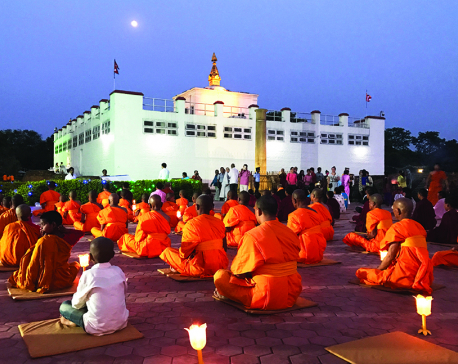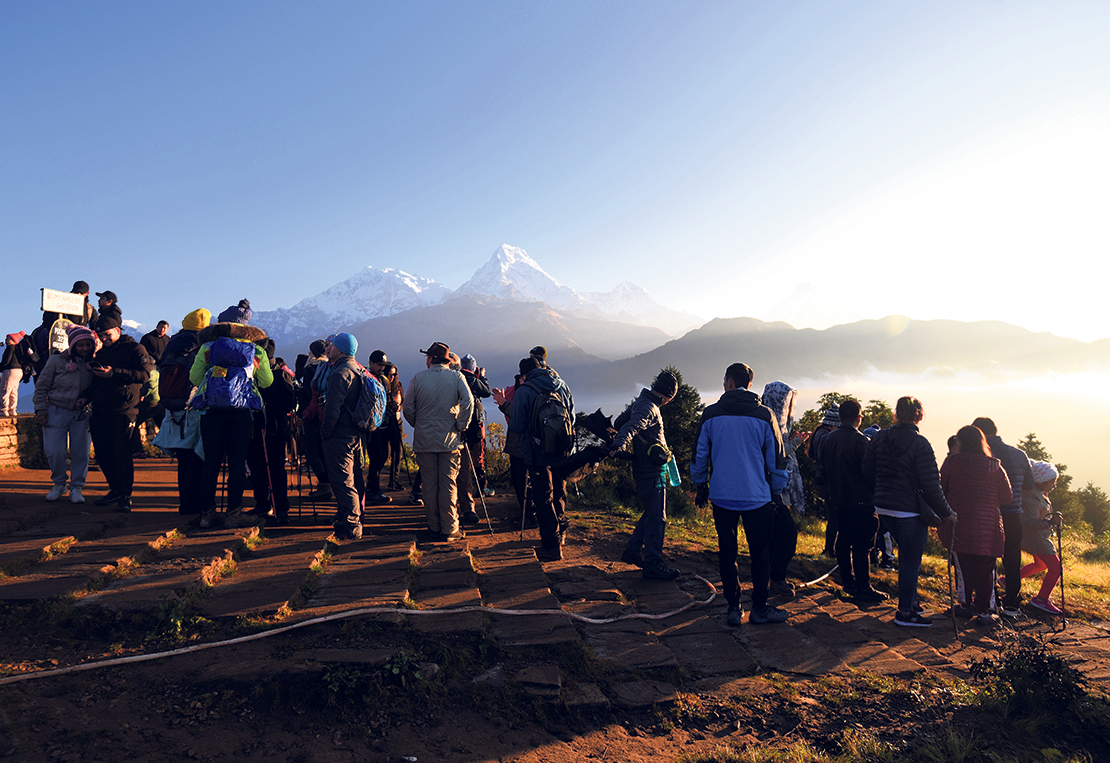
OR

More from Author
History of excavations, both in Taxila and Lumbini, is less than 130 years old. Discovery of both these sites was made possible with accounts of Chinese monk Xuanzang
My visit to Kapilvastu and Rupandehi districts a few months ago will probably constitute the most interesting chapter of the memoir that I intend to write once I retire from work. Drive on the Mahendra Highway from Parasi district through Rupandehi to Kapilvastu was two hours in time, but passed through a history of thousands of years. When my car crossed Rohini River, my thoughts were crossing from Kingdom of Kolya to that of Kapilvastu.
I have lived half my life in Islamabad, an hour drive from the ancient city of Taxila. And yet, I never developed as much interest in Taxila as I did when my tour guide told me standing next to Kapilvastu palace and Ramagrama stupa that these sites were of great religious and political importance some 2,500 years ago but were lost somewhere in history and rediscovered in the late 19th and early 20th century. Discovery of both these sites was made possible with the help of travel accounts of the seventh-century Chinese Buddhist monk, traveler and scholar, Xuanzang.
Sites of Buddhist learning
What my tour guide told me gave me a strong feeling of deja-vu. His narration resonated with what a Pakistani tour guide had told me standing amidst a series of archeological sites in Taxila. Taxila reached the peak of its prominence as an important place of Buddhist learning and urban center between the fifth century BC and second century AD. Subsequently, it lost its centrality and later disappeared from the radars of history. It had been visited by the Chinese traveler Xuanzang in seventh century whose travel accounts helped locate and excavate the ruins in the 20th century—around the same time that Kapilvastu and Lumbini were being rediscovered.
The real fruit of archeological excavations lies in their contextualization. History of excavations, both in Taxila and in Lumbini, is less than 130 years old. Much of the work is even more recent. This is barely sufficient to put the discoveries in the larger picture of history. After all, archeologists discover the ancient artifacts—bricks, utensils, coins, skeletons, religious symbols and architecture. It is the process of contextualizing these artifacts that give us the most useful insights into what the world looked like before the present generations inhabited the earth.
It was perhaps Taxila’s geographical location that made it prosper and gain a prominent place in the vast socio-cultural space of South and Central Asia with China in the north. According to UNESCO, it is one of the most important archeological sites in Asia. Taxila lay at the confluence of ancient trade routes that connected all these regions. These routes, in the later times, came to be known as the ancient Silk Routes. The Grand Trunk Road that extended from Chittagong to Peshawar passed by Taxila and linked this region onward to Central Asia. Northwards, Taxila lay on a route that connected it to China.
Cultural convergences in Taxila were even more diverse than the trade routes. These included strong Greco-Roman and Persian influences, besides the South and Central Asian and Chinese connections. That is what led to the development of famous Gandhara art.
Taxila is a series of archeological sites. Many centers emerged and developed over the centuries. One of the sites of Taxila, Bihr mound is known for the historic entry of Alexander the Great in 326 BC. That brought Greek influences into Gandhara Art. Sirkup was a fortified city whose architecture reflects strong Western Classical/Hellenistic influence. Reportedly some coins found in Taxila bear the mark of King Darius of Persia.
Like in Lumbini, archeological excavations in Taxila and the surrounding areas are not isolated. There is a whole cluster of sites where archeological remains have been excavated. One of them, Takht-Bahi, is house to a first-century AD Buddhist Monastic Complex. The monastery remained in use for over five hundred years till the seventh century. Today its remains include several stupas, meditation rooms and conference halls. Other sites of interest in the same region include those in Peshawar, Swabi and Khanpur.
Link to China
It would be interesting to see how the rest of the world looked like when Taxila was booming as a trading and cultural center. Maurya Empire dominated India with King Ashoka becoming an icon of Buddhism. That was some 500 years before Christianity and a thousand years before Islam. On the West lay the Persian Empire. This was before Europe went into its dark ages and more than a millennium and a half before its renaissance.
Two thousand years later today, Taxila lies on communication links that are fast developing as a part of China-Pakistan Economic Corridor (CPEC). These links are reconnecting Pakistan with China and expanding the communication networks to central and west Asia. The difference is that instead of horses on mud tracks, now there are modern motorways, fast trains, oil and gas pipelines and fiber-optic connectivity. Structures are new, routes and concept is old. The more we change, the more we remain the same.
At times one wonders if the process of globalization is occurring for the first time or if it is a repeat phenomenon. And who knows someone sitting in my place thousands of years from now will be referring to the present day globalization as an old and ancient concept.
Certainly there is a lot more in the layered history of millennia that links the histories of Pakistan and Nepal. A lot more exists in the foundations on which the cultures and ethos of the two societies have evolved. A lot more than what the archeologists have excavated and the historians have deciphered from the brick and mortar remains that offer a valuable window to our past.
The author is Pakistan’s ambassador to Nepal
You May Like This

Branding Buddha’s birthplace
Buddhist tourism can appeal to a large number of faith-inspired travelers. Branding Nepal as Buddha’s birthplace would help to counter... Read More...

Decoding NepaLeaks
It should be noted that mere investing in foreign lands does not constitute illicit activity in an age of globalization... Read More...

Avoiding road deaths
The best way to reduce road traffic deaths and severe injuries in Nepal is through a safe system approach with... Read More...





Just In
- 286 new industries registered in Nepal in first nine months of current FY, attracting Rs 165 billion investment
- UML's National Convention Representatives Council meeting today
- Gandaki Province CM assigns ministerial portfolios to Hari Bahadur Chuman and Deepak Manange
- 352 climbers obtain permits to ascend Mount Everest this season
- 16 candidates shortlisted for CEO position at Nepal Tourism Board
- WB to take financial management lead for proposed Upper Arun Project
- Power supply to be affected in parts of Kathmandu Valley today as NEA expedites repair works
- Godepani welcomes over 31,000 foreign tourists in a year







_20220508065243.jpg)







Leave A Comment